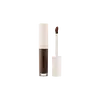Laura Mercier Real Flawless Weightless Perfecting Serum Concealer Versus Laura Mercier Tinted Moisturizer Oil-Free
What's inside
What's inside
 Key Ingredients
Key Ingredients

 Benefits
Benefits

 Concerns
Concerns

 Ingredients Side-by-side
Ingredients Side-by-side

Water
Skin ConditioningC9-12 Alkane
SolventHydrogenated Farnesene
EmollientCoco-Caprylate/Caprate
EmollientDicaprylyl Ether
EmollientGlycerin
HumectantDiphenyl Dimethicone/Vinyl Diphenyl Dimethicone/Silsesquioxane Crosspolymer
Mica
Cosmetic ColorantPolyglyceryl-6 Polyhydroxystearate
EmulsifyingPolyglyceryl-6 Polyricinoleate
EmulsifyingEthyl Oleate
EmollientCaprylic/Capric Glycerides
EmollientStearic Acid
CleansingSilica
AbrasiveButylene Glycol
HumectantEthyl Stearate
EmollientVp/Hexadecene Copolymer
Boron Nitride
AbsorbentDisteardimonium Hectorite
StabilisingMagnesium Sulfate
Sodium Chloride
MaskingPhenoxyethanol
PreservativeLecithin
EmollientGlyceryl Stearate
EmollientMagnesium Stearate
Cosmetic ColorantOleic/Linoleic/Linolenic Polyglycerides
EmollientKaolin
AbrasiveSorbitan Sesquioleate
EmulsifyingPolyglycerin-6
HumectantAluminum Hydroxide
EmollientCamellia Sinensis Leaf Extract
AntimicrobialButyrospermum Parkii Butter Unsaponifiables
Skin ConditioningEthyl Linoleate
EmollientHydrogenated Lecithin
EmulsifyingSodium PCA
HumectantUrea
BufferingEthylhexylglycerin
Skin ConditioningCetyl Alcohol
EmollientPhytantriol
HumectantEthyl Palmitate
EmollientSodium Hyaluronate
HumectantTocopheryl Acetate
AntioxidantStearyl Alcohol
EmollientTrehalose
HumectantTrisodium Ethylenediamine Disuccinate
Spilanthes Acmella Flower Extract
Skin ConditioningHexylene Glycol
EmulsifyingPolyquaternium-51
Skin ConditioningTheobroma Cacao Seed Extract
AntioxidantCaprylyl Glycol
EmollientTriacetin
AntimicrobialTocopherol
AntioxidantNelumbo Nucifera Flower Extract
Skin ConditioningAscorbyl Palmitate
AntioxidantCI 77891
Cosmetic ColorantCI 77492
Cosmetic ColorantCI 77491
Cosmetic ColorantCI 77499
Cosmetic ColorantWater, C9-12 Alkane, Hydrogenated Farnesene, Coco-Caprylate/Caprate, Dicaprylyl Ether, Glycerin, Diphenyl Dimethicone/Vinyl Diphenyl Dimethicone/Silsesquioxane Crosspolymer, Mica, Polyglyceryl-6 Polyhydroxystearate, Polyglyceryl-6 Polyricinoleate, Ethyl Oleate, Caprylic/Capric Glycerides, Stearic Acid, Silica, Butylene Glycol, Ethyl Stearate, Vp/Hexadecene Copolymer, Boron Nitride, Disteardimonium Hectorite, Magnesium Sulfate, Sodium Chloride, Phenoxyethanol, Lecithin, Glyceryl Stearate, Magnesium Stearate, Oleic/Linoleic/Linolenic Polyglycerides, Kaolin, Sorbitan Sesquioleate, Polyglycerin-6, Aluminum Hydroxide, Camellia Sinensis Leaf Extract, Butyrospermum Parkii Butter Unsaponifiables, Ethyl Linoleate, Hydrogenated Lecithin, Sodium PCA, Urea, Ethylhexylglycerin, Cetyl Alcohol, Phytantriol, Ethyl Palmitate, Sodium Hyaluronate, Tocopheryl Acetate, Stearyl Alcohol, Trehalose, Trisodium Ethylenediamine Disuccinate, Spilanthes Acmella Flower Extract, Hexylene Glycol, Polyquaternium-51, Theobroma Cacao Seed Extract, Caprylyl Glycol, Triacetin, Tocopherol, Nelumbo Nucifera Flower Extract, Ascorbyl Palmitate, CI 77891, CI 77492, CI 77491, CI 77499
Water
Skin ConditioningEthylhexyl Methoxycinnamate
UV AbsorberDisiloxane
Skin ConditioningPEG-30 Dipolyhydroxystearate
EmulsifyingEthylhexyl Salicylate
UV AbsorberC12-15 Alkyl Benzoate
AntimicrobialEthylhexyl Palmitate
EmollientGlycerin
HumectantIsohexadecane
EmollientCyclopentasiloxane
EmollientMethicone
EmollientPPG-15 Stearyl Ether
EmollientIsopropyl Titanium Triisostearate
EmollientBoron Nitride
AbsorbentJojoba Esters
EmollientSqualane
EmollientMagnesium Stearate
Cosmetic ColorantPentaerythrityl Tetra-Di-T-Butyl Hydroxyhydrocinnamate
AntioxidantDisodium EDTA
Tocopheryl Acetate
AntioxidantLauryl PCA
HumectantDipotassium Glycyrrhizate
HumectantPhenoxyethanol
PreservativeSodium Dehydroacetate
PreservativeMethylparaben
PreservativePropylparaben
PreservativeIron Oxides
CI 77891
Cosmetic ColorantWater, Ethylhexyl Methoxycinnamate, Disiloxane, PEG-30 Dipolyhydroxystearate, Ethylhexyl Salicylate, C12-15 Alkyl Benzoate, Ethylhexyl Palmitate, Glycerin, Isohexadecane, Cyclopentasiloxane, Methicone, PPG-15 Stearyl Ether, Isopropyl Titanium Triisostearate, Boron Nitride, Jojoba Esters, Squalane, Magnesium Stearate, Pentaerythrityl Tetra-Di-T-Butyl Hydroxyhydrocinnamate, Disodium EDTA, Tocopheryl Acetate, Lauryl PCA, Dipotassium Glycyrrhizate, Phenoxyethanol, Sodium Dehydroacetate, Methylparaben, Propylparaben, Iron Oxides, CI 77891
Ingredients Explained
These ingredients are found in both products.
Ingredients higher up in an ingredient list are typically present in a larger amount.
Boron Nitride is compound consisting of boron and nitrogen. It is used to absorb oil and modify adherence/ slip in products.
This means it is often used in makeup products to help them last longer.
Ci 77891 is a white pigment from Titanium dioxide. It is naturally found in minerals such as rutile and ilmenite.
It's main function is to add a white color to cosmetics. It can also be mixed with other colors to create different shades.
Ci 77891 is commonly found in sunscreens due to its ability to block UV rays.
Learn more about CI 77891Glycerin is already naturally found in your skin. It helps moisturize and protect your skin.
A study from 2016 found glycerin to be more effective as a humectant than AHAs and hyaluronic acid.
As a humectant, it helps the skin stay hydrated by pulling moisture to your skin. The low molecular weight of glycerin allows it to pull moisture into the deeper layers of your skin.
Hydrated skin improves your skin barrier; Your skin barrier helps protect against irritants and bacteria.
Glycerin has also been found to have antimicrobial and antiviral properties. Due to these properties, glycerin is often used in wound and burn treatments.
In cosmetics, glycerin is usually derived from plants such as soybean or palm. However, it can also be sourced from animals, such as tallow or animal fat.
This ingredient is organic, colorless, odorless, and non-toxic.
Glycerin is the name for this ingredient in American English. British English uses Glycerol/Glycerine.
Learn more about GlycerinMagnesium Stearate is a salt that is 2 parts stearic acid and 1 part magnesium.
It is a white powder that can be used to add bulk and color to products by binding to oil ingredients.
Phenoxyethanol is a preservative that has germicide, antimicrobial, and aromatic properties. Studies show that phenoxyethanol can prevent microbial growth. By itself, it has a scent that is similar to that of a rose.
It's often used in formulations along with Caprylyl Glycol to preserve the shelf life of products.
Tocopheryl Acetate is AKA Vitamin E. It is an antioxidant and protects your skin from free radicals. Free radicals damage the skin by breaking down collagen.
One study found using Tocopheryl Acetate with Vitamin C decreased the number of sunburned cells.
Tocopheryl Acetate is commonly found in both skincare and dietary supplements.
Learn more about Tocopheryl AcetateWater. It's the most common cosmetic ingredient of all. You'll usually see it at the top of ingredient lists, meaning that it makes up the largest part of the product.
So why is it so popular? Water most often acts as a solvent - this means that it helps dissolve other ingredients into the formulation.
You'll also recognize water as that liquid we all need to stay alive. If you see this, drink a glass of water. Stay hydrated!
Learn more about Water